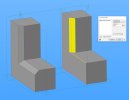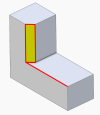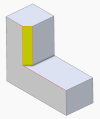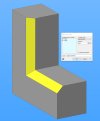I understand what you are explaining here but from a user point of view it seems like something that only creates more clicks.
I know! I really do understand that in these cases it's not ideal. I wish it was different, or that overcoming the nature of this was trivial to do. It's not impossible, but it certainly isn't worth it. I totally get that it sucks to have to toggle previews on and off to select geometry in certain cases.
Perhaps a way forward is to:
a) let you determine the default toggle state of previews (so you would turn if off)
b) make a hotkey that, while depressed, displays the realtime preview
So then your workflow is select as normal, perform a quick check (quick is relative), and then finalize the feature. Maybe this can be mostly overcome with some UX modifications.




